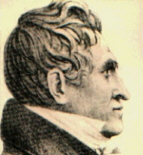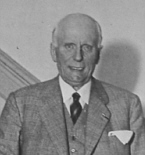A brief history of the game of Billard Artistique The history of billiards is long and very rich. The game has been played by kings and commoners, presidents, mental patients, ladies, gentlemen, and hustlers alike. It evolved from a lawn game similar to the croquet played sometime during the 15th century in Northern Europe. Play was moved indoors to a wooden table with green cloth to simulate grass, and a simple border was placed around the edges. The balls were shoved, rather than struck, with wooden sticks called “maces”. The term “billiard” is derived from French, either from the word “billart”, one of the wooden sticks, or “bille”, a ball. During the 18th century, most of our information about early billiards comes from accounts of playing by royalty and other nobles. It has been known as the “Noble Game of Billiards” since the early 1800’s, but there is evidence that people from all walks of life have played the game since its inception. In 1600, the game was familiar enough to the public that Shakespeare mentioned it in Antony and Cleopatra. Seventy-five years later, the first book of billiard rules remarked of England that there were “few Towns of note therein which hath not a publick Billiard-Table”. |
|||||||||||||
In 1807 the frenchman François Mingaud
had the idea to glue a small piece of leather on the
top of the cue: The effect was born. Then it was
possible to give sidespin, take the ball on his upper
side to create a followingshot, take him on the
lower side to make a draw shot. It takes time to
discover all the possibilities, but someone first put chalk on the leather, raised the cue to make a Massé. This happens 1818. |
 |
||||||||||||
| Until the early 1900's Fancy shots or "Trick shots" were presented by some entertainers, like Georg Mösslacher, F. Cassignol, Fr. Zabokrtsky, Erich Hagenlocher, ... It was the time of Varietés: | |||||||||||||
"1901 - The ambidextrous May Kaarlus, 16, performs a sereis of amazing billard shots in New York City. Male experts try and fail to duplicate her shots." History of Women in Sports Timeline 1900-1929 |
Erich Hagenlocher, Varieté-Artist |
||||||||||||
| Not every player was successful enough to play in a varieté. For these players it was the time of the Café, where they made their competitions and exhibitions: | |||||||||||||
| A café in Rudolfsheim in Vienna / Austria approx. 1890 | Café Olympia, approx. 1920 |
||||||||||||
The 4th World Championship Free Game was held 1931 in Vichy/France. After this World Championship, almost every participant played a 12-figure-program with 4 tries for each shot. This Competition, named "Ier Concours International de Fantaisie Classique" was the first in a row of 6 Tournaments, held after other Championships. Below You will see the 12 figures played: |
|||||||||||||
| A new era began in the early 1930s: Frenchman Alexander Avé built the first Gabarit. This template makes it possible to mark the table more easier, more precisely and ... uniform, everywhere on the world. |  |
||||||||||||
| After this, the way was free for organized international Championships: | |||||||||||||
|
|
|||||||||||||
Peterson and Ribas were the 2 participants of the 1st World Championship of the Professionals, held on Feb. 8th and 9th 1932 in St.Louis Missouri / USA. |
The first World Championships of the Amateurs counts 10 participants and were held june, 30th - july, 3rd 1937 in the Billard-Palace near the Opera in Paris. |
||||||||||||
| At the first official Amateur-Championships they played 64 figures with 4 tries each. With 26 solved figures the 17-jear old German August Tiedtke makes 208 points and won this title. | |||||||||||||
August Tiedtke |
A view into the Tournament area (1937): Maurice van der Kerckhove (B) playing fig.50 |
||||||||||||
| While complications happened in billiard- and worldpolitics such as the foundation of two Federations of Billiard sports and WWII it was very difficult to organize righteous and fair international championships. But also in this rough times players compares with others. They went back to the Café: | |||||||||||||
A billardclub in Porto 1939 |
A tournament in 1940 |
||||||||||||
In 1957 the history of the World Championships continues: In the spanish town Murcia the 3rd World Championship was held. They played the same program of figures as 1937, winner of this Tournament was the spanish player Joaquin Domingo. In his carreer he played not only billiard artistic: All together he became 3-times World Champion, 8-times European Champion and 67-times Spanish Champion. Another sportsmen who lives the game of Billard Artistique was the Belgium René Vingerhoedt. He won one World- and 6 European titles in Billard Artistique. If we take a look on all disciplines, it takes too long to count his titles. After 3 World- and 22 European titles there are European teamchampionships, Belgium titles,.... |
|||||||||||||
Joaquin Domingo 1917 - 1981 |
René Vingerhoedt 1921 - 2005 |
||||||||||||
Another non active very remarkable artist of the last century is the Belgium player Raymond Steylaerts. He won his first national title 1952 and his first European title with european record of 302 points in Madrid in the year 1954. In total he scored 26 national, 14 European and 6 World titles.
A lot more interresting phenomens of Billiard Artistic have to be listed, such as Leo Corin, Jean Bessems, Frans Belderbos, Ricardo Fernandez, Claudio Nadal and Hans de Jager. If you want to know more about historic, tournament results, players,... almost everything about billard artistique you will find on the site of the |
Raymond Steylaerts , at the beginning of his carreer |
||||||||||||
Continue with: main page - all participants - time schedule - results - photos - ciba-online |
|||||||||||||